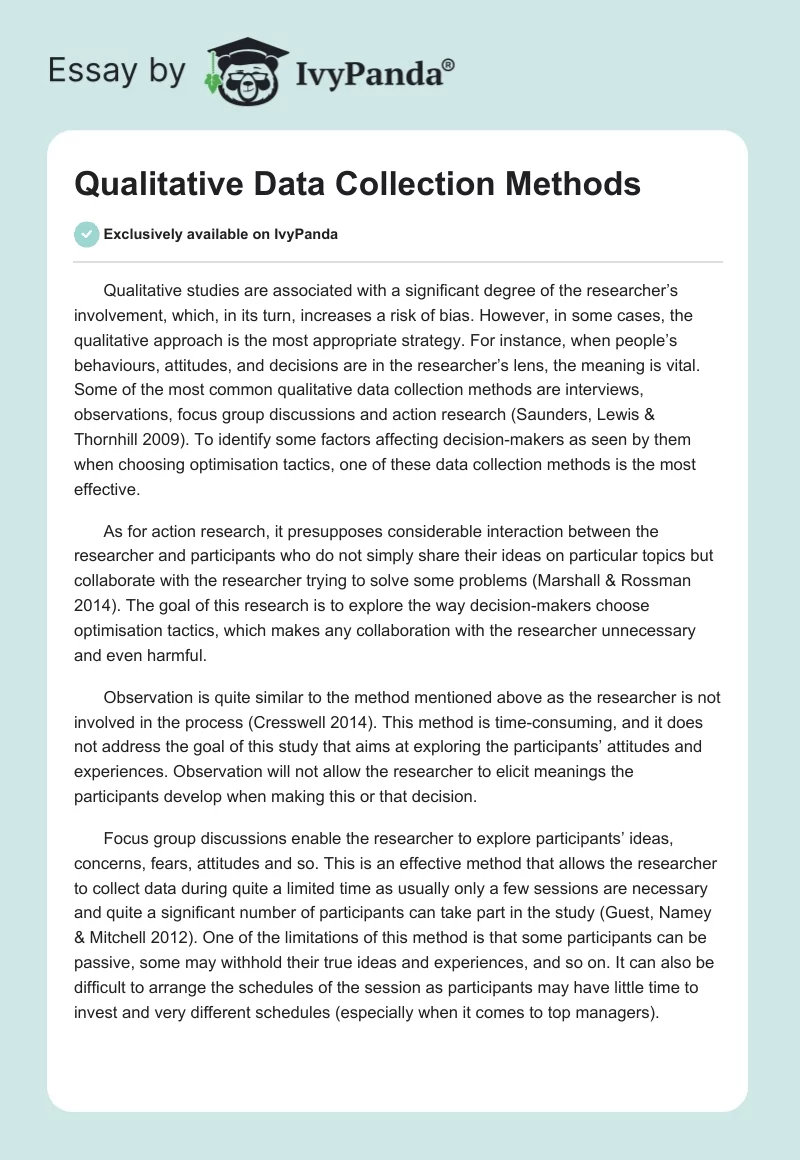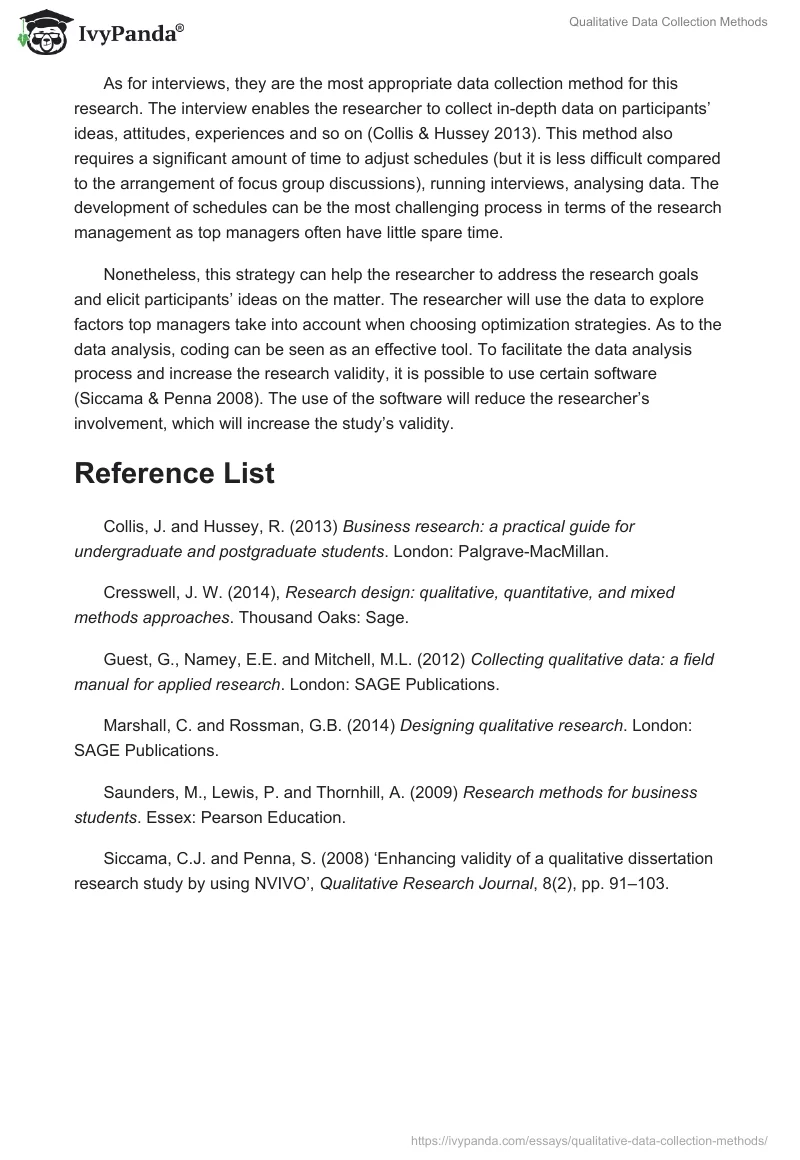Qualitative studies are associated with a significant degree of the researcher’s involvement, which, in its turn, increases a risk of bias. However, in some cases, the qualitative approach is the most appropriate strategy. For instance, when people’s behaviours, attitudes, and decisions are in the researcher’s lens, the meaning is vital. Some of the most common qualitative data collection methods are interviews, observations, focus group discussions and action research (Saunders, Lewis & Thornhill 2009). To identify some factors affecting decision-makers as seen by them when choosing optimisation tactics, one of these data collection methods is the most effective.
As for action research, it presupposes considerable interaction between the researcher and participants who do not simply share their ideas on particular topics but collaborate with the researcher trying to solve some problems (Marshall & Rossman 2014). The goal of this research is to explore the way decision-makers choose optimisation tactics, which makes any collaboration with the researcher unnecessary and even harmful.
Observation is quite similar to the method mentioned above as the researcher is not involved in the process (Cresswell 2014). This method is time-consuming, and it does not address the goal of this study that aims at exploring the participants’ attitudes and experiences. Observation will not allow the researcher to elicit meanings the participants develop when making this or that decision.
Focus group discussions enable the researcher to explore participants’ ideas, concerns, fears, attitudes and so. This is an effective method that allows the researcher to collect data during quite a limited time as usually only a few sessions are necessary and quite a significant number of participants can take part in the study (Guest, Namey & Mitchell 2012). One of the limitations of this method is that some participants can be passive, some may withhold their true ideas and experiences, and so on. It can also be difficult to arrange the schedules of the session as participants may have little time to invest and very different schedules (especially when it comes to top managers).
As for interviews, they are the most appropriate data collection method for this research. The interview enables the researcher to collect in-depth data on participants’ ideas, attitudes, experiences and so on (Collis & Hussey 2013). This method also requires a significant amount of time to adjust schedules (but it is less difficult compared to the arrangement of focus group discussions), running interviews, analysing data. The development of schedules can be the most challenging process in terms of the research management as top managers often have little spare time.
Nonetheless, this strategy can help the researcher to address the research goals and elicit participants’ ideas on the matter. The researcher will use the data to explore factors top managers take into account when choosing optimization strategies. As to the data analysis, coding can be seen as an effective tool. To facilitate the data analysis process and increase the research validity, it is possible to use certain software (Siccama & Penna 2008). The use of the software will reduce the researcher’s involvement, which will increase the study’s validity.
Reference List
Collis, J. and Hussey, R. (2013) Business research: a practical guide for undergraduate and postgraduate students. London: Palgrave-MacMillan.
Cresswell, J. W. (2014), Research design: qualitative, quantitative, and mixed methods approaches. Thousand Oaks: Sage.
Guest, G., Namey, E.E. and Mitchell, M.L. (2012) Collecting qualitative data: a field manual for applied research. London: SAGE Publications.
Marshall, C. and Rossman, G.B. (2014) Designing qualitative research. London: SAGE Publications.
Saunders, M., Lewis, P. and Thornhill, A. (2009) Research methods for business students. Essex: Pearson Education.
Siccama, C.J. and Penna, S. (2008) ‘Enhancing validity of a qualitative dissertation research study by using NVIVO’, Qualitative Research Journal, 8(2), pp. 91–103.


